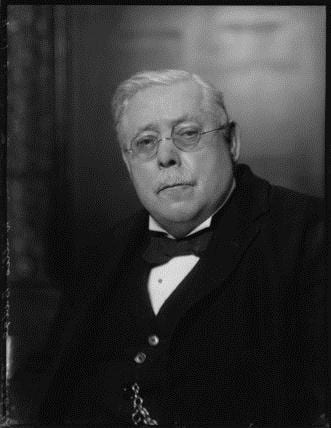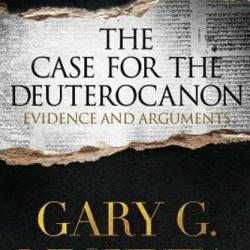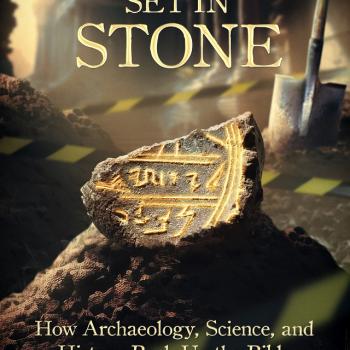
This is a massive abridgment (keeping all the “meat and potatoes”) of a huge exchange with an atheist who goes by “DagoodS”: dating 10-21 January 2011. The original consisted of four parts, linked on my Atheist web page to Internet Archive (one / two / three / four).
***
Ah, the irony and humor here . . .
This is one of those familiar cases where — in the past — only the Bible mentioned something or other. So the “smart folks” (at least some among them): those enlightened, progressive souls who alone (so they never tire of informing us) have a lock on truth and inquiry with integrity and an open mind, at one time denied that the Hittites existed as a people in history. It wasn’t sufficient for them that the Bible frequently mentioned them (the only known source that did until 140 or so years ago). They looked down their noses at the Bible as a source for solid historical documentation and information.
Lo and behold, in the last quarter of the 19th century and especially by 1906-1907 a series of archaeological finds placed the existence of the Hittites (as both a distinct ancient people and an empire) beyond the reasonable doubt of any serious scholar in the field. The Bible was right again.
But, alas, now there is apparently a polemical atheist canard that Christians have engaged in shoddy apologetics, insofar as we have claimed that some skeptics once denied the existence of the Hittites. Are we Christian apologists engaged in a cynical cover-up of a truth we either know and have deliberately concealed (in our know-nothing dogmatism), or have long since forgotten (thus displaying our historical ignorance and shoddy research capabilities)?
Now let’s go on to an examination of whether anyone of note did deny the existence of the Hittites, or (a lesser claim) the Bible’s accuracy regarding them. In an article for the British Quarterly Review (July 1882), William Wright states:
I hope not only to prove the Bible true by contemporary and corroborative evidence, but also to show that a great empire, forgotten by ancient and modern historians must be restored to the ancient kingdoms of the world. By confirming the Bible we shall discover a lost empire.
It is desirable that this investigation should be undertaken, because the casual references to the Hittites in the Bible have been used by the enemies of Divine revelation to discredit the historical accuracy of the book, and some of the weak friends of the Bible have begun to propagate doubt where they cannot disprove.
In 1857 Professor F. W. [Francis William] Newman, fellow of Balliol College, Oxford, in his History of the Hebrew Monarchy [pp. 178, 179, Vol. xii], speaks of the Bible references to the Hittites as ‘unhistorical,’ and as ‘not exhibiting the writer’s acquaintance with the times in a very favourable light,’ and the Rev. T. K. [Thomas Kelly] Cheyne, Fellow of the same college, writing on the Hittites, in the Encyclopaedia Britannica, last year [1881], treats the Bible statements regarding the Hittites as unhistorical and unworthy of credence. Referring to the mention of the Hittites in the Book of Genesis, he says, ‘ The lists of these pre-Israelitish populations cannot be taken as strictly historical documents,’ ‘they cannot be taken as of equal authority with Egyptian and Assyrian inscriptions;’ and, carrying out his comparison, he adds, ‘Not less unfavourable to the accuracy of the Old Testament references to the Hittites is the evidence deducible from proper names.’ I shall examine these references to the Bible in the light of Egyptian and Assyrian inscriptions when I come to the passages referred to. It is enough here to draw attention to the manner and progress of unbelief. Professor Newman discredits what he does not understand, and Mr. Cheyne, mistaking the arrogance of scepticism for disproved facts, accepts his predecessor’s conclusions, and gives them the wider currency of his own credit. [pp. 53-54]
[see also the same author’s Hittites Up to Date (1892) for a general treatment of the Hittites and the history of archaeological skepticism]
[see also, Cheyne’s entire article on the Hittites for the 9th edition of Encyclopaedia Britannica]
Note, however, that neither Newman’s nor Cheyne’s positions entail an absolute denial that the Hittites existed: only a severe doubting of many particulars and the general thrust of the biblical accounts, which have since been corroborated by archaeological evidence.
Exact names of the skeptical archaeologists and other scholars who denied the historicity of the Hittites are hard to come by (I’ve spent many hours myself trying to track some down), but (according to reputable reports) they appear to have been numerous to some extent prior to the last quarter of the nineteenth century, when many successful and fantastically fruitful excavations were undertaken. Here are, for example, three allusions to such skepticism, from Christian scholarly sources:
The lack of extra-biblical testimony to their existence led some scholars about a half-century ago to deny their historicity. They scoffed at the idea of Israel allying herself with such an unhistorical people as the Hittites, as narrated in 2 Kings vii.6. But those utterances have vanished into thin air. (Ira M. Price, The Monuments and the Old Testament [Philadelphia: American Baptist Publication Society: 1907], pp. 75-76).
[S]ome scholars in the nineteenth century expressed doubts as to the existence or at least the importance of such an ancient people. (Joseph P. Free, Archaeology and Bible History [Wheaton, Illinois: Scripture Press Publications, Inc., revised edition: 1969], p. 125)
Twenty-five years ago some of the foremost orientalists did not believe in the existence of a Hittite nation. (The International Standard Bible Encyclopedia, edited by James Orr, five volumes [Grand Rapids, Michigan: Wm. B. Eerdmans Publishing Co., 1956; from the 1929 version], “Hittites,” John Garstang, vol. III, p. 1402 ff.)
Now, of course, the atheist will come back and say, “those are Christian sources, so who cares if they merely make a general statement like that?! Why should we trust them? It doesn’t prove anything. They’re biased, and are just perpetuating the old wives’ tale. They don’t name names or document their contentions.”
Well, I would say we trust them because two of them come from archaeologists who can be trusted to accurately report the history of their own area of study (even if they are biased towards Christianity). Note that archaeology scarcely existed in the mid-19th century, which is why none of the three citations use the term “archaeologist.” An “orientalist” or near eastern historian or biblical scholar would be more what they had in mind.
So if the choice in conflicting statements lies between two Christian archaeologists with a bias towards “pro-biblical” sentiments (one even an expert on the Hittites) and a professor of Semitic languages on one side, and a polemical former Christian atheist lawyer with a strong bias against the Bible on the other, I think (in matters of archaeology and the history of same, and of its precursors) I will go — all things being equal — with the Christian archaeologists: just as I would prefer DagoodS if the question had to do with the law: that being his field.
Joseph P. Free was chairman of the Department of Archaeology at Wheaton College, Illinois. He led extensive excavations at Dothan (associated with Joseph and Elisha in the Bible) from 1953-1964.
John Garstang (1876-1956) was an eminent archaeologist: educated at Oxford, professor at the University of Liverpool (1907-1941), and author of many volumes in the field, including The Burial Customs of Ancient Egypt as illustrated by the Tombs of the Middle Kingdom… (London, John Constable, 1907), The Land of the Hittites… (Constable, 1910), The Hittite Empire... (Constable, 1929), The Heritage of Solomon (Williams and Nortgate, 1934), and (with J. B. E. Garstang) The Story of Jericho (Hodder & Stoughton, 1940). He is listed in the Oxford Dictionary of National Biography.
Ira Maurice Price (1856-1939) was a professor at the University of Chicago and cooperating editor of The American Journal of Semitic Languages and Literatures from 1892 till his death. He had a distinguished scholarly career, receiving his doctorate from the University of Leipzig (1886). He was a professor of Semitic languages and literatures in the University of Chicago from 1900-1939 and author of books such as Syllabus of Old Testament History (New York, 1891), The Great Cylinder inscriptions (A and B) of Gudea, part 1 (Leipzig, 1899), Some Literary Remains of Rim-Sin (Arioch) of Larsa (1905), and The Ancestry of our English Bible (Philadelphia, 1907).
I have no good reason to doubt the above reports: especially that of Garstang, who wrote books about the Hittites and can be fully expected to know the history of his own field and the history of general scholarly thought regarding the Hittites.
I have found more information, from The International Standard Bible Encyclopedia, (“Archaeology,” written by M. G. Kyle, Vol. I, p. 230-231 [italics as they appear in my own hardcover set; green highlighting my own] ):
2. Theories Affecting the Integrity or Historicity of Scripture.*Many critical theories attacking the integrity or historicity of Scripture, i.e. reconstructive theories, have been utterly discredited by archaeological evidence, and, in some cases, abandoned by those who held them (compare Driver, Genesis, addenda, 7th edition, xx). . . .*Descending now to a few of the great mass of particulars, we may mention:*(d) Mythology and Bible:*The theory of the legendary character of the four kings of Genesis 14, and of the Hittites; and theory of the generally mythological character of the early portions of the Bible. . . .*(2) The Hittites:*Then grave doubts in the past have been raised concerning the Hittites. Occasionally it has been boldly said that “no such people ever existed” (compare Newman, Hebrew Monarchy, 184-85; Budge, Hist of Egypt, IV , 136). But in addition to the treaty of Rameses II with the “Kheta,” long generally believed to have been the Hittites (RP, 2nd series, IV, 25-32), and the references to the “Hatti” in the Tell el-Amarna Letters, also thought to be the same people, we now have Winckler’s great discovery of the Hittite capital at Boghaz-Koi, and the Hittite copy of the treaty with Rameses II in the cuneiform script. The Hittites are seen to be a great nation, a third with Egypt and Babylonia (OLZ, December 15, 1906).
Dr. M. G. [Melvin Grove] Kyle (D.D., LL.D.) (author of this article) was an Egyptologist and Newburg Professor of Biblical Theology and Biblical Archaeology at Xenia Theological Seminary, associate editor of Bibliotheca Sacra, and author of the books, Moses and the Monuments: Light from Archaeology on Pentateuchal Times and The Problem of the Pentateuch: A New Solution by Archaeological Methods (both Oberlin: 1920). He wrote a chapter entitled, “The Recent Testimony of Archaeology to the Scriptures,” which was Chapter 17 of Volume 1 of The Fundamentals: A Testimony to the Truth (1909): the famous work of Christian defense. In his chapter, he wrote (my green highlighting):
II. The Hittite Vindication
A second recent testimony of archaeology gives us the great Hittite vindication. The Hittites have been, in one respect, the Trojans of Bible history; indeed, the inhabitants of old Troy were scarcely more in need of a Schliemann to vindicate their claim to reality than the Hittites of a Winckler.
In 1904 one of the foremost archaeologists of Europe said to me: “I do not believe there ever were such people as the Hittites, and I do not believe ‘Kheta’ in the Egyptian inscriptions was meant for the name Hittites.” We will allow that archaeologist to be nameless now. But the ruins of Troy vindicated the right of her people to a place in real history, and the ruins of Boghatz-Köi bid fair to afford a more striking vindication of the Bible representation of the Hittites.
Only the preliminary announcement of Winckler’s great treasury of documents from Boghatz-Köi has yet been made. The complete unfolding of a long-eclipsed great national history is still awaited impatiently. But enough has been published to redeem this people completely from their half-mythical plight, and give them a firm place in sober history greater than imagination had ever fancied for them under the stimulus of any hint contained in the Bible.
There has been brought to light a Hittite empire in Asia Minor, with central power and vassal dependencies round about and with treaty rights on equal terms with the greatest nations of antiquity, thus making the Hittite power a third great power with Babylonia and Egypt, . . .
Dr. George Frederick Wright (D.D. LL.D.; [evolutionist] geologist as well as historian and theologian, and prolific author) wrote Chapter 16 in the same volume (I), entitled “The Testimony of the Monuments to the Truth of the Scriptures.” He stated:
Until the decipherment of the inscriptions on the monuments of Egypt and Assyria, the numerous references in the Bible to this mysterious people were unconfirmed by any other historical authorities, so that many regarded the biblical statements as mythical, and an indication of the general untrustworthiness of biblical history. A prominent English biblical critic declared not many years ago that an alliance between Egypt and the Hittites was as improbable as would be one at the present time between England and the Choctaws. But, alas for the over-confident critic, recent investigations have shown, not only that such an alliance was natural, but that it actually occurred. . . .
It is impossible to overestimate the value of this testimony in confirmation of the correctness of biblical history. It shows conclusively that the silence of profane historians regarding facts stated by the biblical writers is of small account, in face of direct statements made by the biblical historians. All the doubts entertained in former times concerning the accuracy of the numerous biblical statements concerning the Hittites is now seen to be due to our ignorance. It was pure ignorance, not superior knowledge, which led so many to discredit these representations. When shall we learn the inconclusiveness of negative testimony?
Rev. F. E. Hartman, in “The Story of Biblical Criticism” (The Expositor, Vol. XXI, No. 241; October 1919), writes:
Vatke regarded the first four books of the Old Testament as largely mythical . . .
The Hittites mentioned in the Bible were claimed by the destructives to be mythical and the numerous statements concerning them an indication of the general untrustworthiness of biblical history, because those statements were not confirmed by any other historical records. But now the Inscriptions on the monuments discovered in Egypt, Assyria, Armenia, Asia Minor, and northward, tell us of the expeditions and wars and widespread power of the Hittite kings. . . . The monuments have confirmed so much of biblical history that the supposed silence of profane history should be considered of small account in the face of the direct statements of the biblical writers. (pp. 785-786)
In the same work, Hartman names several higher critics (he calls them “destructives”): [Johann Gottfried] Eichhorn, [Frederick Carl] Eiselen, [Wilhelm Martin Leberecht] De Wette, [Wilhelm] Vatke, [Abraham] Kuenen, [Johann S.] Vater, [Julius] Wellhausen, [Heinrich] Ewald, [Edward] Reuss, [George] Graf, [David] Strauss, [Ferdinand Christian] Bauer, and [Ernest] Renan. He is referring to at least some of these men in his statement above. Perhaps searching these names with “Hittite” will yield some individual skeptical statements.
William Wright, responding to T. K. Cheyne on 3 April 1885 (in The Academy, Vol. 27, April 18, 1885, No. 676, p. 278), stated:
Dr. Cheyne saw reason more than two years ago to modify his views with regard to the “Hittites of Genesis.”
Dr. Cheyne is pleased to contrast his principles of Old Testament criticism with mine, of course without knowing what mine are. But on this point there need be no mystery. For the purposes of my book it is enough to assume that the Bible is a venerable old document which professes to deal with certain fact.’. These facts I assume to be true until I have reason to doubt them, and on this principle I welcome every discovery and scrap of genuine evidence which add to the reasonable probability of the statements in the Bible. The Saturday Review, referring to the point at issue between Dr. Cheyne and me, fitly sums up the case thus:“Granting that the sacred writers were unscrupulous, it would still be impossible to imagine why they should fill their early records with the most matter-of-fact references to a purely imaginary people. There is no nonsense that the professors of the Higher Criticism will not talk.”
I have nothing to do with Dr. Cheyne personally. But Dr. Cheyne’s articles in the Encyclopaedia Britannica are public property, and he has no right to demand that I shall omit all references to his assertions. I venture to say that such a demand was never made before by an author. Why should he make such a request, seeing he has nothing to alter? It has been my aim not to misrepresent Dr. Cheyne’s statements, and in the second edition of my book, now in the press, I have softened a few phrases which I feared might give pain; but until he formally withdraws certain assertions discrediting Bible narratives I shall consider it my duty to confront his assertions by the ascertained facts of modern research.
Methodist Review, January 1895, p. 137 ff.: “Archaeology and Biblical Research: The Hittites” (unknown author):
Should the reader take a concordance of the Old Testament and examine the passages referring to the Hittites he would be convinced at once, if he had no theory to maintain, that he was reading history, and not the exploits of some legendary people, the mere creation of some Oriental story-teller. The references are so explicit and numerous as to preclude the idea of a myth or interpolation. . . .
The last three notices, though not as full and explicit as could be desired, yet read like genuine history and show clearly that the Hittites, mentioned, as they are, alongside of the kings of Egypt and Syria, were a people of commanding influence. It is, therefore, strange that, in the face of such evidence as we have and such circumstantial statements in so many places in the Old Testament where there could have been no motives for interpolations or the introduction of myths, there are learned men, like Francis William Newman, who boldly stamp the account of the panic in the Syrian camp at Samaria as an extraordinary creation of the imagination. The story as told in the Bible, according to Newman, “does not exhibit the writer’s acquaintance with the times in a very favorable light. Its unhistorical tone is too manifest to allow of our easy belief in it.” And, as if these statements were not strong enough, the appends the following note: “No Hittite kings can have compared in power with the king of Judah, the real and near ally, who is not mentioned at all. . . . Nor is there a single mark of acquaintance with the contemporaneous history.” Scholars like De Goeze and Merx insist that several references to the Hittites in the Old Testament are either interpolations or unhistorical.
Professor Cheyne is very loath to accept the biblical account of the Hittites, and, were it not for the more sure word of the Egyptian monuments and Assyrian tablets, he, like Newman, would make a short work of this troublesome people. Says the learned professor, in an article on the subject, ” Some confusion has been caused in the treatment of the history of the Hittites by the uncritical use of the Old Testament.” Cheyne, though forced to admit that the Hittites are repeatedly mentioned in the Bible, yet insists that the lists in which they and other pre-Israelitish populations are given cannot be strictly historical documents. To throw greater doubt upon the biblical records he assumes that they were all written centuries after the events described had taken place and, therefore, less worthy of credence than the monuments of Egypt and Assyria. . . .
Though we know, with certainty, neither the language nor the origin of the Hittites, the time has passed when any scholar will relegate this ancient and powerful people to the realm of the mythical. How gloriously God’s word vindicated by the ancient monuments of lost empires!
William Wright responded further to T. K. Cheyne, in The Academy, [Vol. 27, May 2, 1885, No. 646, p. 316] on April 27, 1888:
“THE EMPIRE OF THE HITTITES.”
London : April 27, 1888. In the midst of much that is incoherent in Dr. Cheyne’s letter he has not made very clear his attitude pro tem. to the Bible. My assumption that “the Bible is a venerable old document which professes to deal with facts ” he declares to be “a bold historical heresy.” The assumption is one which no scientific man, whether he believed in the Bible or not, would challenge. For the purposes of my book it was unnecessary to assume any higher authority for the Bible than that accorded to any other venerable book. I thought I should be here on common ground with Dr. Cheyne. I did not even assume that the Bible deals with facts, but only that it professes to deal with facts. Is it this lowly and self-evident assumption that Dr. Cheyne stigmatises as “bold historical heresy”? Or is it simply the word document instead of documents that Dr. Cheyne makes so much of? He speaks of the ” seventy tablets” of Sargon as a “venerable document,” and he would hardly call it heresy to speak in the same convenient way of the collection of books which make up the Bible. If this should be his meaning I am quite willing to use “collection of documents,” or any similar phrase, but without changing my position in any other way.
A few secondary matters in Dr. Cheyne’s letter require correction. He begins by accepting my “concession.” I am not aware that I have made any concession, or that I can make any concession consistently with loyalty to facts.
He says: “No one would guess from Dr. Wright’s letter that the book (not books) of Kings was quite distinct from the book of Genesis.” I have made no reference in my letter to either book or books of Kings. Does Dr. Cheyne’s theory permit him to annotate without consulting his text?
I am not sure if Dr. Cheyne still labours under the impression that I am an American. He thinks it was not uncharitable to account for my criticism “on the assumption of the author’s different nationality.” It is my privilege to know a number of American scholars who, with firm loyalty to the Bible, advocate as I do the fullest critical freedom; and I think Dr. Cheyne would act more charitably if he conceded ordinary morality to scholars of every nationality.
I notice with pleasure the increase of courtesy in Dr. Cheyne’s style, and I think it is to be regretted that he considered it necessary to import personal matters into this controversy, or to raise the absurd cry of ” heresy.”
Having said so much, I think the time has come for closing this controversy. Dr. Cheyne admits that the references to the Hittites in the Book of Kings are in accordance with “recent archaeological discoveries.” He wishes me to mention that he does not object to support “the statements of a Biblical writer by sound archaeological evidence.” He admits that the Kheta of the Egyptian inscriptions, the Khatti of the Assyrian, and the Hittites of the Bible are the same people. He admits that Hittite influence “extended even into Asia Minor.” He considers it proved ” that the Hittites penetrated through the Eastern barrier formed by the Taurus range,” and he recognises evidence of the extension of their power to the shores of the Aegean. He is favourable to the hypothesis that the Hittites were the early civilisers of Asia Minor, and he considers them non-Semitic, and the authors of the Hittite inscriptions.
It would thus seem that we are agreed on all points but one, namely, the accuracy of the account of the Hittites in the Book of Genesis. On this point there should no longer be any difference between us. Dr. Cheyne admits publicly, “that a branch of the Kheta may once have existed in Palestine”; but he adds, “unfortunately there is no historical evidence that it did so.” Since he wrote these words, as I have already pointed out, Dr. Cheyne admitted privately, that he had reconsidered the question, and I cannot understand why his full recognition should be any longer withheld from a cause which his own industry has done so much to promote.
The new edition of my book is delayed by the preparation of additional plates of new inscriptions and sculptures, but I shall not regret the delay if thereby I may be able to add Dr. Cheyne’s maturer conclusions.
Hal Flemings, Examining Criticisms of the Bible (AuthorHouse: 2008, p. 101):
Up until the late 1870s, critics argued loudly that the Hittites were a myth, that the Bible’s references to them were inaccurate and non-historical. Even early editions of the respected Encyclopaedia Britannica referred to the Hittites as “a mythological civilization mentioned only in the Bible.” All that changed when archaeological discoveries produced startling evidence of a thriving Hittite civilization.
From the above information, we have now determined that there were a number of people (essentially, adherents of the school of “Higher Criticism”) who questioned not only the existence of the Hittites, or at least the biblical accounts of same, but also the bulk of the early narrative histories of the Old Testament. 27 of the 46 biblical mentions of the Hittites (or 59%) occur in Genesis, Exodus, Numbers, Deuteronomy, Joshua, and Judges. Here they are:
Johann Severin Vater (1771-1826; German)
Friedrich Wilhelm Joseph Schelling (1775-1854; German)
Wilhelm Martin Leberecht De Wette (1780-1849; German)
Ferdinand Christian Bauer (1792-1860; German)
Wilhelm Vatke (1806-1882; German )
David Friedrich Strauss (1808-1874; German) [lengthy quotation]
Hermann Schultz (1836-1903; German) [quotation]
Theodor Noldeke (1836-1930; German)
Thomas Kelly Cheyne (1841-1915; English) [quotation]
Sir Ernest Alfred Thompson Wallis Budge (1857-1934; English)
It’s much more difficult to find bald statements that “the Hittites didn’t exist”: for a variety of reasons. It’s very old material (before 1881, for the most part); a great deal would be in German (since Germany was the hotbed of “higher criticism”); like much of theological liberalism, the language is highly nuanced and not given to succinct statements of this sort. The bulk of the evidence involves a characterization of the early narratives in the Bible as fiction; therefore, this would include the Hittites among many other alleged myths (such as Abraham, etc.). In other words, if Genesis is a “myth,” then the stories and reports of the Hittites recorded therein are also myths, as opposed to historical fact.
The best ironclad proof at this point appears to be editions of the Encyclopaedia Britannica prior to and including 1881. My task is to track them down. If the reputed quote about the Hittites as “a mythological civilization mentioned only in the Bible” turns out to be accurate, then this pseudo-“debate” is completely over.
Moreover, it’s simple logic:
1) Six early books of the Bible contain 27 references to the Hittites.
2) Skeptics denied that these six books are historical, or thinks they are mostly mythical / legendary, etc.
3) Therefore, before the time of the confirming archaeological discoveries (mostly after 1875): when most of the higher critics above lived, to deny the historicity of those accounts, was to deny the historicity of the Hittites, since at that time, only the Bible had any information at all about them.
Current research corroborates the biblical account. For example, Trevor Bryce, in The Kingdom of the Hittites (Oxford University Press, new edition, 2005, p. 356) comments on 2 Kings 7:6:
This conveys the impression that the Hittite kings were at least commensurate in importance and power with the Egyptian Pharaohs. A similar impression is conveyed by 2 Chron. 1:17 . . . In these cases the references may well be to the neo-Hittite kingdoms of Syria. . . .
Hoffner [see his many books on the topic] has commented that Hittite cultural influence reaching the Israelites indirectly via the Canaanite kingdoms, after a passage of time, is detectable in many instances. His contention is that through many years of contact with cities in Syria and Phoenicia (Carchemish, Aleppo, Ugarit) Hittite civilization left its mark there. From their Hittite influences may have filtered southwards to Israel just prior to the beginning of the kingdom of David. . . .
[related footnote 142 on p. 487] . . . see most recently the discussion of Singer . . . who regards as conclusive the identification of these [Canaanite, biblical] Hittites with those of the neo-Hittite kingdoms of Syria and southern Anatolia.
On p. 388 Bryce refers to “the period from c. 1100 to 700 BC, i.e., the period of the neo-Hittite kingdoms.”
As a representative example of dozens of similar statements I have seen in my research, we have the following from Bibliotheca Sacra: the oldest theological journal in America: published by Andover Newton Theological School from 1844 to 1884, Oberlin College from 1884 to 1922, Xenia Seminary from 1922 to 1934, and Dallas Seminary ever since. The following is from an article written by M. B. Stearns (my green emphases):
It is also well to remind ourselves of the numerous facts stated in the Bible which were formerly ridiculed by the critics, but which have now been confirmed by archaeology. Among others, there is the early date of writing. It is many a long year since the critics argued that Moses could not write, for tablets are now available dating from about 3500 B.C. written in the ancestor of cuneiform script. Then there is the famous case of Belshazzar of Babylon whose existence used to be doubted, until archaeology came to his rescue. Similarly with the Hittite race, now discovered to have been one of the great peoples of antiquity. It is interesting to know that Sir Leonard Woolley, whose name has become a household word because of his remarkable discoveries at Abraham’s city of Ur, is at present engaged in the excavation of a great Hittite palace near Antioch in Syria, built about 1600 B.C. Of this discovery he himself has written to the London Times, “The frequent references in the Old Testament to Hittites living in Syria and Palestine in the Patriarchal age, which have often been rejected as anachronisms, may yet prove sound history.” For if the Hittites were established in Antioch as early as 1600 B.C., there may well have been some members of their race farther South.’ (“Biblical Archaeology and the Higher Critics,” Vol. 96 [July-Sep 1939], 307-318; citation from pp. 316-317; thanks to Douglas E. Ward from Miami University for this information)
I ran across another interesting citation. This person, Claude Reignier Conder, denies that there was such a thing as the “Hittite Empire” and also that the Hittites were a “distinct race” (my green emphases):
I have always felt that the theory of a ‘Hittite Empire’ rested on no very secure base. If we had found the Hittites to belong to some distinct race, the theory might be still necessary, but it is so no longer. On the monuments we hear of the Hittites only as a powerful and civilized tribe of Syria. The tribes of Asia Minor did not bear the name. In the Bible we have no notice of a Hittite Empire, but only of the chiefs of the Hittite country—which was Northern Syria. Herodotus could not have had any personal objection to the Hittites, but he certainly never tells us of a Hittite Empire, nor does any other ancient writer. This empire was not, I think, ‘forgotten,’ for it never existed. The point may seem very unimportant, but I think one reason why the texts have never been previously read is because they were not recognised as Altaic, and because the Hittites were regarded as a distinct stock. (Altaic Hieroglyphs and Hittite Inscriptions, London [?]: Richard Bentley and Son, 1887, pp. 138-140)
There exists no antipathy towards Homer, or secondarily, to the existence of Troy, because Homer is harmless fantasy that has no bearing on anyone’s life. It doesn’t claim to be revelation. No one is obliged to follow any moral commands in the book. Therefore there is no reason to have a strong hostility against it. I submit the following analogy:
A) Many people used to deny that Troy existed because only Homer mentioned it.
B) Many people used to deny that the Hittites existed because only the Bible mentioned them.
A2) No one feels any particular need to document the former skepticism about Troy, because it is so widely understood to have occurred.
B2) Therefore, by analogy, no one necessarily feels any particular need to document the former skepticism about the Hittites, because it is so widely understood (at least by the archaeologists who first challenged it) to have occurred.
C) But the history of pre-archaeological biblical skepticism is not as widely known as the history of the view of Troy and the beginnings of archaeology; therefore, it is demanded that defenders of the Bible have to document to a tee, since the history is more unknown.
D) But none of this proves that the Hittite skepticism didn’t exist. Many reputable, credentialed scholars say that it did, and there is no good reason to doubt their professional opinion about the history of their own field.
The problem is not holding the Bible to the same standard; it is the opposite: holding it to a far different standard than other works. The Bible is not taken at face value when it presents history, even though it has been corroborated by outside evidence again and again. There is exponentially greater skepticism brought to it by the skeptical mentality: that nothing else is subjected to.
The prior [early 19th century] bias, I believe, worked in the following way: “if only the Bible mentions the Hittites, then I cannot trust it, because it is a religious document.” But the Bible is also historical, and presents accurate history. This was denied by some simply because it was also religious, and claimed to be revelation.
In terms of archaeology and historiography, all we’re asking for is that the Bible is treated like any other document, and not approached with extreme hostility, before any particular question is even considered.
Fiction, even historical fiction (Gone With the Wind, etc.), is understood to be just that. I grant that one could still hold that there was a Moses and an Abraham and Hittites, while claiming that the accounts are essentially mythological. But archaeology has shown that the Bible is far more than myth, which is the point. Melvin Grove Kyle (D.D., LL.D.), The Deciding Voice of the Monuments in Biblical Criticism (Oberlin, Ohio: Bibliotheca Sacra Co.: 1912), pp. 105-106 (my green emphases):
Some had even gone so far as to say, though not often for publication, that “no such people as the Hittites ever existed.” Budge, in his History of Egypt, says: “The Kheta, who are, no doubt, the people referred to by the Assyrians under the name of Khatti, have been identified with the Hittites of Holy Scripture, but on insufficient grounds,” and again, “In passing it must be stated that the commonly accepted identification of the Kheta with the Hittites of the Bible is as yet unproved, since it rests only upon the similarity between the Hebrew name Heth, and the Egyptian name Kheta.”
The inhabitants of old Troy were no more in need of a Schliemann to justify their claim to a right of real existence and a place in history, than the Hittites were of some friendly discoverer to deliver them from the serious suspicion of, to say the least, legendary accretions of character, if not even of unreality. In 1906 the deliverer came. Winckler uncovered the ruins at Boghatz-keui and brought to light, in addition to architectural ruins and a treasury of inscriptions in Hittite hieroglyphs, also tablets in cuneiform script. Among these latter was found the Hittite copy of the same treaty of peace between Rameses II and the “Kheta.” What these tablets, when fully understood, may yet reveal concerning the Hittites and what vast and amazing additions to learning may come with the decipherment of the Hittite hieroglyphs themselves, an event which certainly cannot much longer be delayed, no one can tell. Already there is this important result; no one is saying now that “no such people as the Hittites ever existed.”
So one by one the so-called myths and legends of the Bible are being given their place in sober history and the ghostly heroes are walking in common flesh and blood among the other real heroes of life. As this process goes on (and the list of illustrations might be extended to nearly every patriarchal narrative) there is being supplied that complete historical setting into which the narratives of the Bible fit with perfect naturalness. But legends and myths do not receive such confirmation and do not so fit into an historical setting. That they do not do so is one of the characteristics which mark them as myths or legends.
Now, almost by accident, I have managed to discover the identity of the anonymous person above who denied that the Hittites existed at all. This is done by comparing another statement from Kyle: in his piece entitled, “The Recent Testimony of Archaeology to the Scriptures.” When the two passages are examined side-by-side, it is clear that the person who made the striking, sweeping statement of denial was none other than Sir Ernest Alfred Thompson Wallis Budge (1857-1934), someone I had already named as “skeptical of the Hittites” but “to a somewhat lesser extent” (based on the information I had before: which was basically the published statements above). I had also suspected before that he might be the anonymous person (because of being mentioned in the context), but I had no evidence at my disposal to be sure.
The fact that Kyle and Budge were both Egyptologists explains how they would have been friendly enough for Budge to have confided to him privately that he thought the Hittites never existed. Kyle was charitable enough to not name him, but left clues that I managed to decipher (ironically an exercise of a sort of fun “literary archaeology”) by consulting the similarities of the two above accounts.
That Budge would qualify as “one of the foremost archaeologists of Europe” is unarguable, after one looks at his credentials, accomplishments, knighthood, numerous important publications (over 120 books!), etc. (see an online biography that summarizes his incredible academic achievements). In 1904 at the time of the private communication he was Keeper at the British Museum.
Budge is the man who made the statement that removes all doubt as to whether anyone held such a view. And he did this (even more strikingly) in 1904 after it was almost inexcusable to still take such a view.
In his 1929 (originally 1913?) book, The Rosetta Stone, Budge gives indirect indication of his skepticism in print, by putting every instance of the word Hittite or Hittites in the text (pp. 194-196) in quotation marks: thus suggesting a questionable identification, whereas he does no such thing for Babylonians, Assyrians, etc.
Budge writes similarly in his volume, A Guide to the Babylonian and Assyrian Antiquities (London: Harrison & Sons: 1900), where he uses skeptical phraseology such as “. . . which has been called Hittite” (p. 27) and “seals inscribed in the so-called Hittite character” (p. 200).
Our arduous journey has, therefore, come full circle, and we have accomplished our task. Dr. Kyle left the clues as to the identity of this person (Dr. Budge). He didn’t want to say it outright, in deference to a friend and colleague, so as not to embarrass him, but on the other hand, it was valuable information on the presence of such skepticism, and how archaeology eliminated such a radical view, so he felt obliged to leave strong inferences: strong enough that I can stumble upon them almost a hundred years later and put two and two together.

















